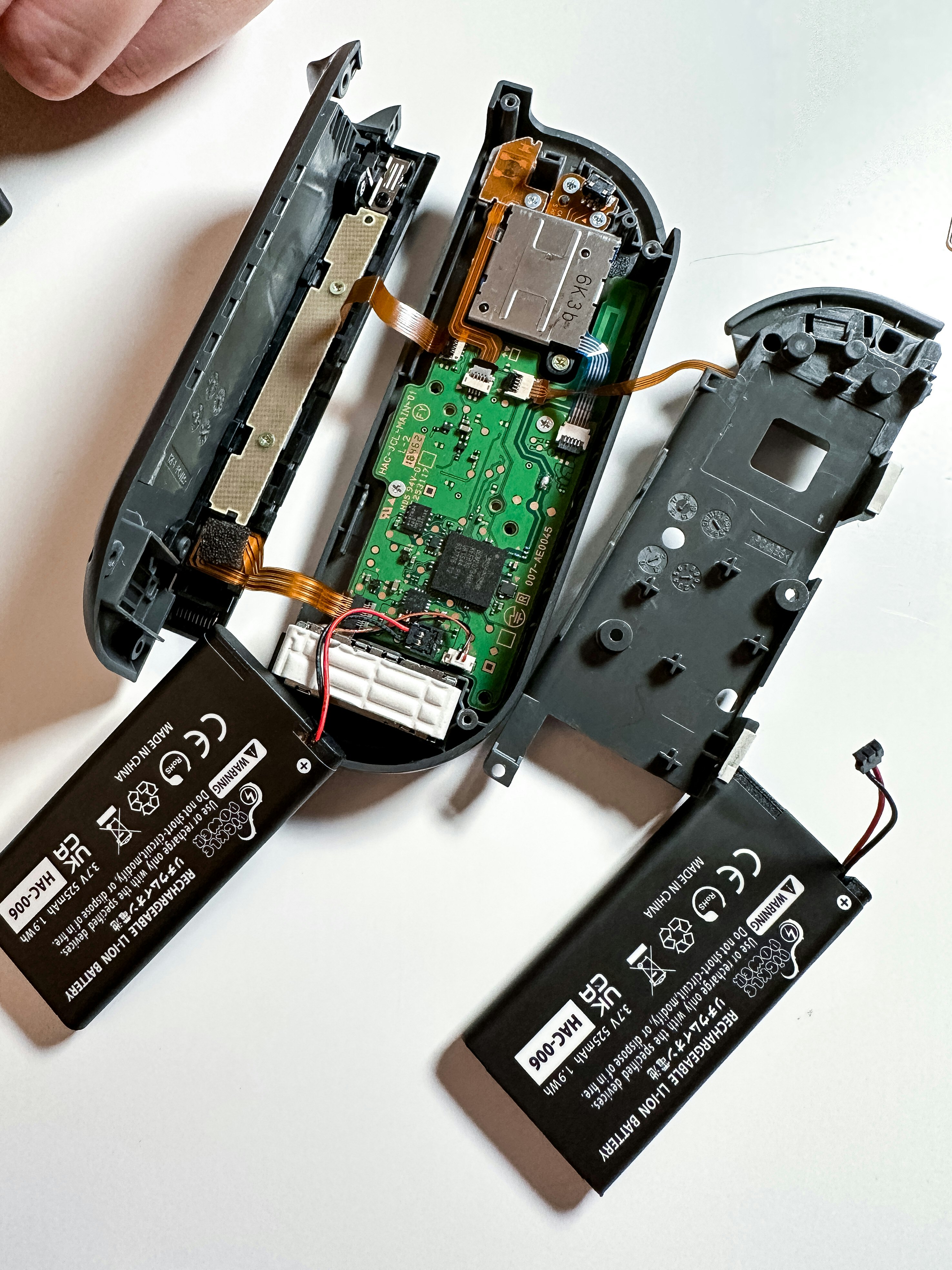
Tears of the Kingdom FOMO got me.
I rarely rush out to buy — or these days, download at midnight — a game on release day. It's not that I don't like The Legend of Zelda or anything. I just don't enjoy getting swept up in the hype and spoilers and memes.
That's perfectly fine for me because I already have plenty that I obsess about (like tech). But the FOMO was so strong this time — literally everyone and their mom, their grandma, their friggin' cats were playing Nintendo's latest masterpiece — that I caved and downloaded the game, going against my value of not purchasing a digital Nintendo game if I could own the cartridge version. (I like the physical carts, even if they're not as convenient or eco-friendly. Sue me, I like collecting.)
Unfortunately, I didn't get very far because the L shoulder button on my left Joy-Con stopped working. Thus began my descent down into some deep rabbit holes about Joy-Cons at 3 a.m. and how I eventually repaired my Joy-Con for $6.
Joy-Cons are Expensive
I have owned my Nintendo Switch since launch day, which means March 3, 2017. Is Nintendo's hybrid handheld/console hitting its ceiling with games like Tears of the Kingdom and Pokémon Scarlet/Violet? Absolutely, but I'm a hardcore subscriber to the Nintendo philosophy that less is more and how beautiful a texture wrapped around polygons is less important than a great story or relatable characters and how that makes you feel.
It's a miracle my Joy-Cons even lasted six years. Maybe I was just lucky but I've never had Joy-Con drift. I take pretty good care of my Switch and Joy-Cons, never flinging them to cause them damage. I've cared for my Nintendo systems and controllers the same way for 30-something years, and the fact that all of them still work perfectly is a testament to the Official Nintendo Seal of Quality.
As I quickly found out, replacing my Joy-Con would not come cheap. Six years after the Switch came out, Joy-Cons still cost $79.99 for a pair. Nintendo sells individual left and right Joy-cons for $39.99 each, but they are mostly sold out at third-party retailers like Best Buy or Amazon. If they're not sold out, sellers are charging serious markups for as much as $50+. What?! eBay's prices aren't friendlier.
No More Gray Joy-Cons
I must have missed the memo because the gray Joy-Cons are also no longer sold. Apparently, Nintendo discontinued the gray controllers (along with Neon Yellow and Mario Red) in April 2020. This was not what I wanted to read at 3 a.m.
Why would Nintendo discontinue the only Joy-Con color that doesn't scream toy? Sure, gray is not fun, but I bought the gray Joy-Con version specifically because I don't want my Switch drawing attention when I'm using it in public. Gray is boring, but it is neutral.
I wouldn't be complaining if Nintendo sold the Joy-Cons in another neutral color like white or black, but it doesn't. Not separately at least. The only way to get white Joy-Cons is to buy a whole Switch OLED or buy the Joy-Cons used on eBay or Facebook Marketplace. My checks didn't return any conditions or prices that felt acceptable.
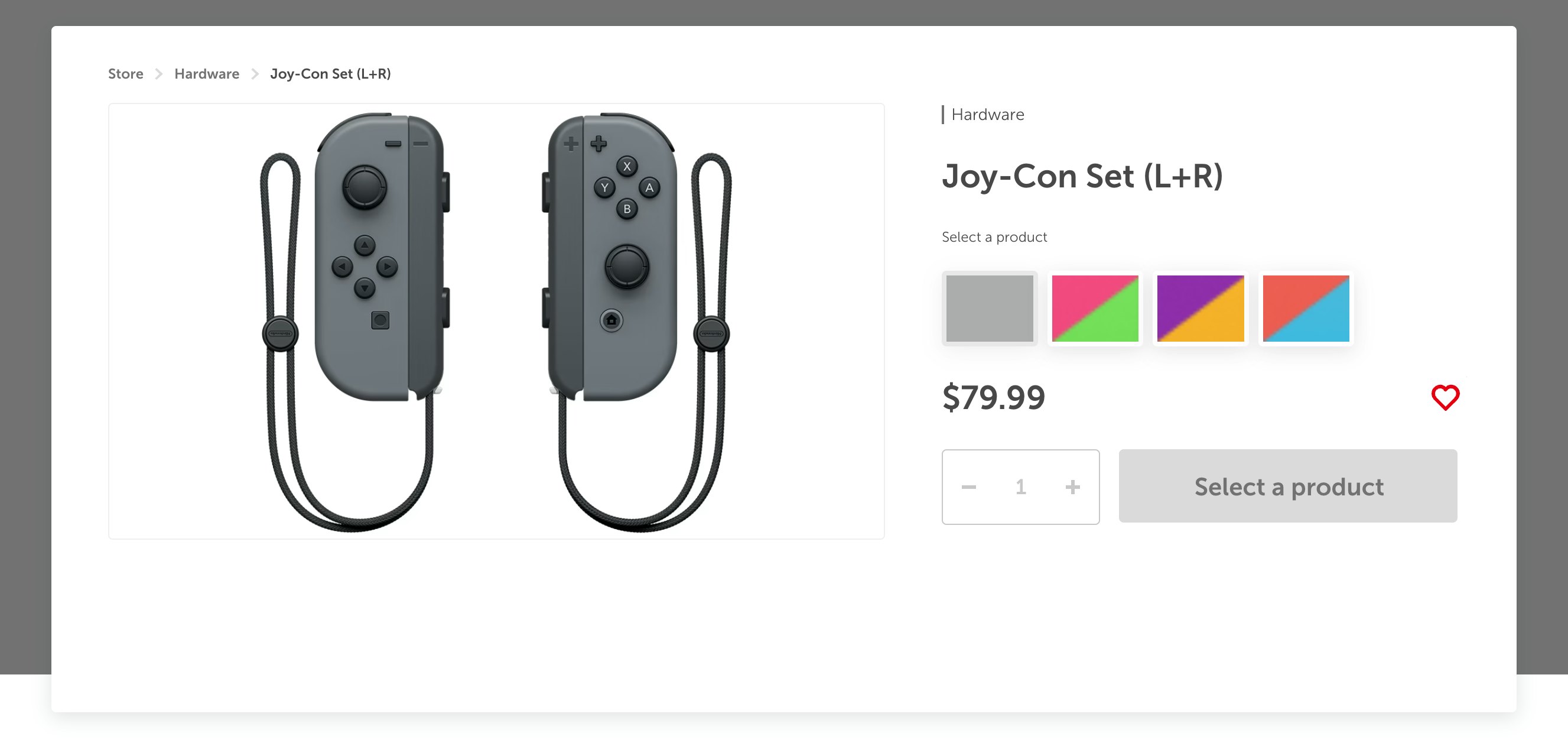
Nintendo does sell a single left Joy-Con for $29.99 in refurbished condition, but it would have cost me an additional $10 for shipping. And the shipping would have taken up to nine business days. My FOMO simply couldn't wait nine days or stomach the cost of paying what would essentially be full price for a refurbished left Joy-Con in gray when I could just visit my local Best Buy and buy one in another color. Oh wait, Best Buy is sold out of single Joy-Cons.
I would have purchased a different set of color Joy-Cons, but I don't like any of them. Neon Pink/Neon Green, or Neon Purple/Neon Orange, or Neon Red/Neon Blue just aren't for me. I like the Animal Crossing and Skyward Sword Joy-Cons, but those were limited edition — and the aftermarket prices, woof! No thanks.
Third-Party Joy-Cons All Have A Catch
Nearly defeated, I looked into buying a third-party Joy-Con. Surely, one would suffice? Hori's Switch D-Pad Controller looked cool; it even comes with a Pikachu print. There's also one with a Zelda theme. $24.99 — sold! That was until I read the product description and realized why it was so cheap: it's missing almost everything inside of a Joy-Con. It only works with the Switch in handheld mode because it doesn't have a battery; there's no vibration; there's no IR sensor for motion controls; there are no L and R buttons tucked inside of the railing. The only thing I liked about it was the D-pad in place of the four separate arrow buttons. I promptly removed it from my cart.
Similar Joy-Con-like controllers from Hori including the highly rated Split Pad Pro had the same shortcomings.
Unsurprisingly, my online search also brought my attention to myriad Joy-Con knockoffs on Amazon, AliExpress, Temu, etc. Some of these look nearly indistinguishable from Nintendo's official product, but read any of the descriptions or reviews (or lack thereof) and there's always something that's off about them. Others seemed to have some cool features that the official Joy-Cons didn't such as adjustable LEDs along the grips.
Thank god for Wulff Den or I would have thrown money at some of these non-returnable clones. I know better than to buy a knockoff, but the brain is a very vulnerable organ in the middle of the night.
Repairing My Joy-Con
With no options, I turned to YouTube and iFixit to see if I could repair my own Joy-Con. After prying open my broken Joy-Con with my very satisfying electric screwdriver, I located the problem: a broken actuator that had snapped off the PCB it was connected to, the result of mashing the L shoulder button too many times (and probably too forcibly).
I ended up accidentally breaking the connecting wire for the Joy-Con battery, which required me to buy a replacement battery for $17.99. But had I not done that the total cost of repairing my Joy-Con would have been $5.99 for a new actuator (two to be exact since they came in a pair).
A day later and in less than 10 minutes, my left Joy-Con was good as new, and with a fresh battery to boot. All of this was possible because Nintendo makes the Joy-Con easy to open up. There's no glue or adhesives sealing up the casing to make it difficult to get into. The screws are basic tri-wing and Phillips head. And all of the connectors unplug with little force.
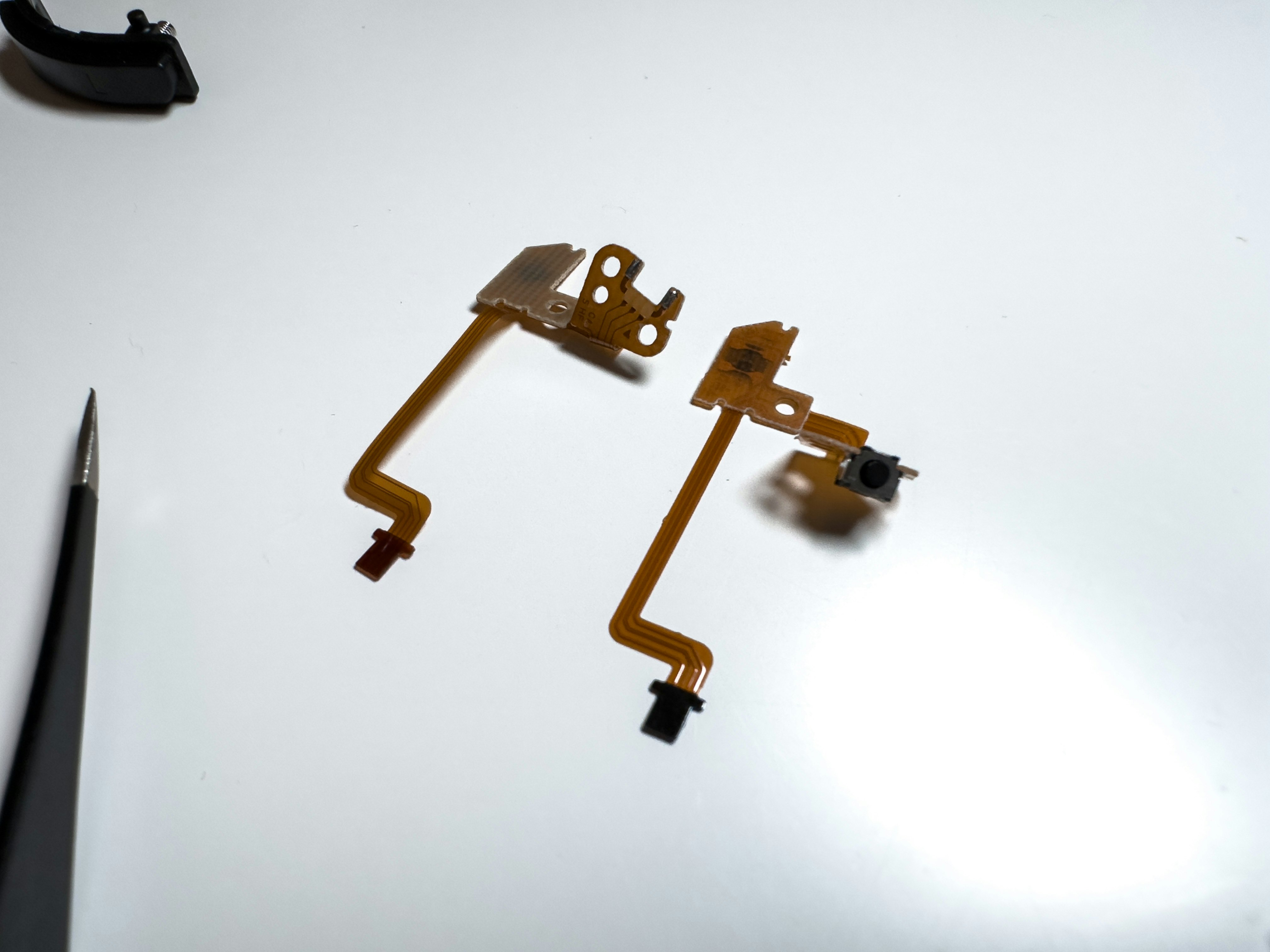
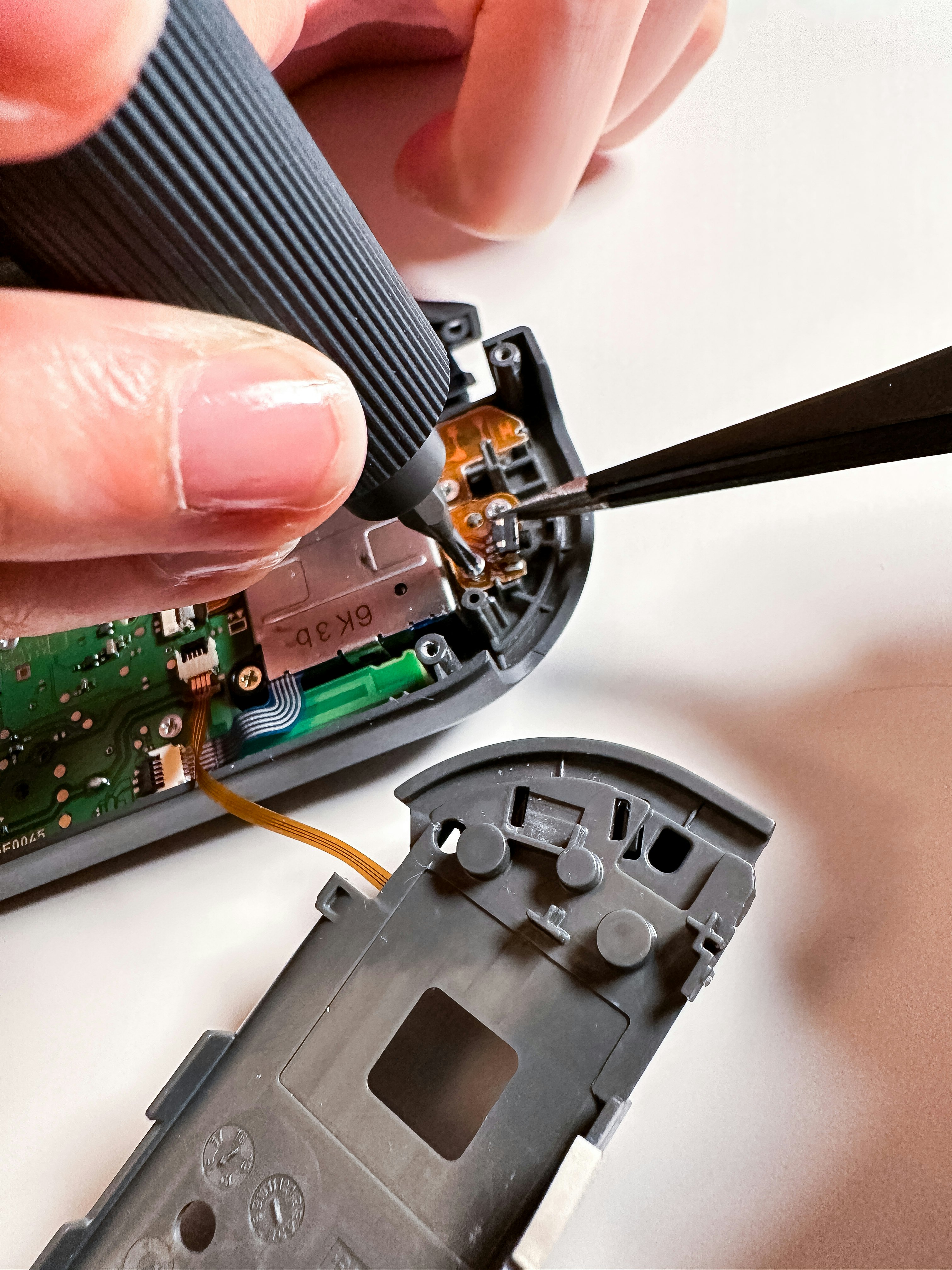
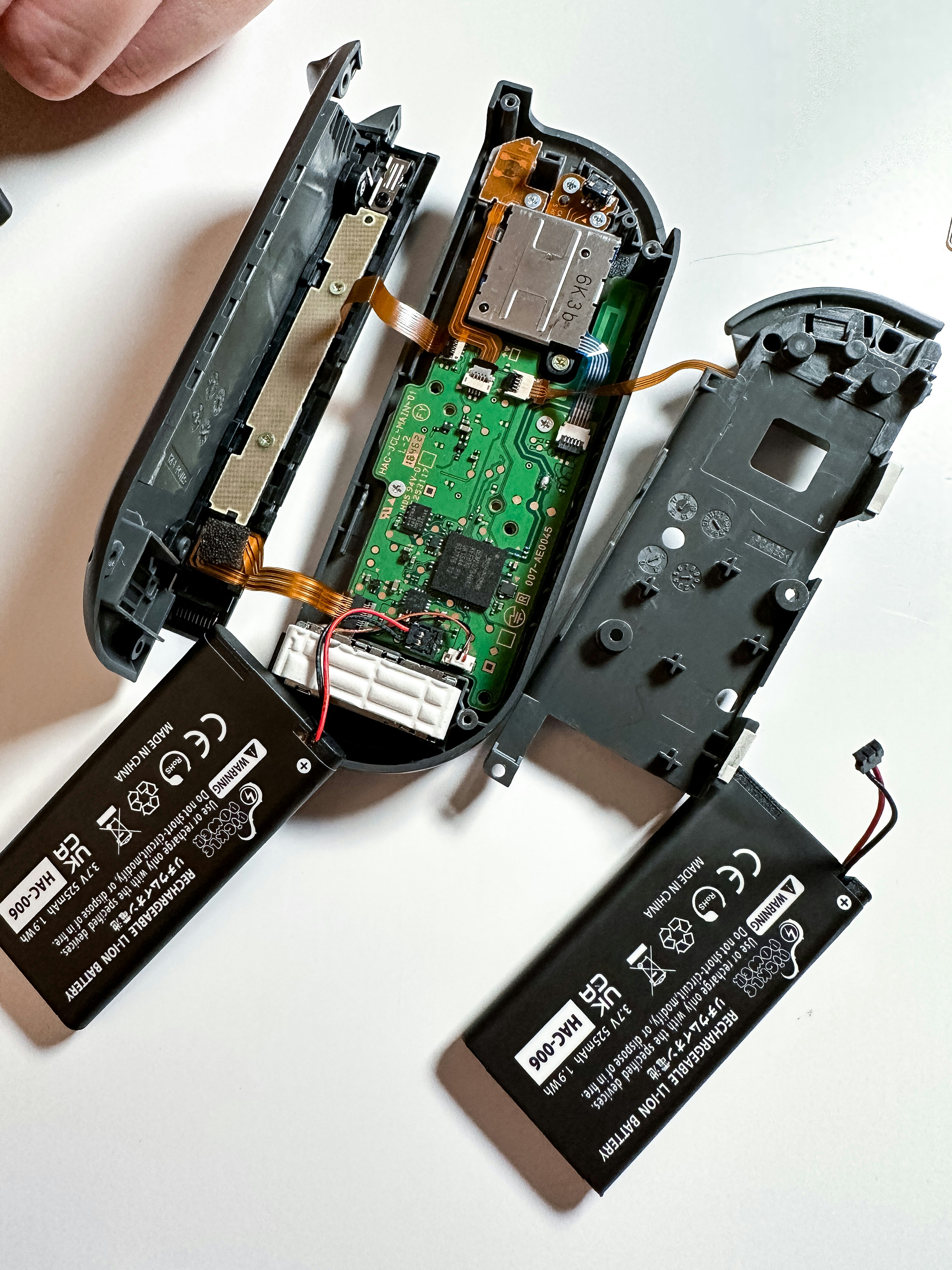
Much has been said about Right to Repair and new legislation is making it easier for consumers to obtain the tools, parts, and instructions to repair their own devices. Ultimately, being able to fix your own devices is a very good thing. It can be cheaper and, at least for me, extremely satisfying to know that I repaired my own stuff.
Did I void my Joy-Con warranty in the process? I definitely did, but Nintendo left me with no choice. It wouldn't sell me a cheap, gray Joy-Con. I just wanted a cheap, gray Joy-Con to cure my Tears of the Kingdom FOMO. Turns out $6 was all I needed to spend.







